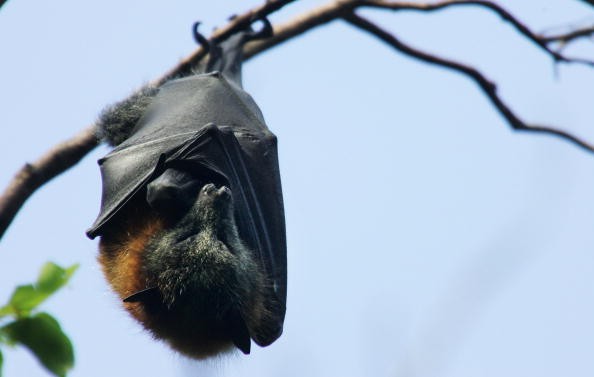Researchers claimed that humans with COVID-19 could also infect bats, which could endanger these flying mammals' lives. The new study could shed light on the current belief that bats are the leading cause of the novel coronavirus.

A Grey-Headed Flying Fox hangs from it's roost at the Royal Botanic Gardens March 20, 2008 in Sydney, Australia. Flying Foxes, or fruit bats, have taken up permanent roosts in the Botanic Gardens, causing major damage to heritage trees in the park. The Royal Botanic Gardens has begun a program to deter the flying foxes from roosting, as there are now some 11,000 bats roosting in the park. Deterents include noise to disturb sleep patterns, plastic bags attached to branches of trees, strobe lights, odours, and the playing of taped distress calls.
According to Financial Express's latest report, a new research, which was published by the Conservation Science and Practice journal, claimed that humans could be the carriers of the novel coronavirus. This means that people could also infect various animals, especially bats.
The U.S. Geological Survey is the one that conducted the latest study, revealing that bats could also be threatened by the deadly virus.
"Wildlife management agencies in North America are concerned that the activities they authorize could lead to transmission of SARS‐CoV‐2 to bats from humans," said the researchers.
Can humans infect bats with COVID-19?
Although humans could somehow infect these flying mammals with COVID-19, the researchers confirmed that there is only 0.001% that this could happen, even if the infected humans don't wear protective gear when visiting bat caves.

A grey headed "flying fox" bat named Barry, his ears burnt off by bushfire, recovers on January 27, 2020 in Bomaderry, Australia. The Shoalhaven Bat Clinic and Sanctuary has received a large number of orphaned babies during this bushfire season, as bat mothers, weakened by drought and habitat devastation are unable to carry their young on their annual migration south.
On the other hand, if people wear protective equipment and tested negative for the novel coronavirus, there's still a 1 in 3,333 chance that they will infect these animals.
"This is a small number, but the consequences of human-to-bat transmission of coronavirus are potentially large," said Evan Grant, one of the new study's researchers, via USGS.
He added that the virus is not identified in the North American bats as of the moment. However, COVID-19 could still lead to illness and mortality of the flying mammals once it is introduced.
Can humans infect other animals?
The World Health Organization confirmed that humans could also infect other animals such as dogs, domestic cats, minks, tigers, lions, and more.
On the other hand, WHO researchers said that minks could get one of the most vulnerable animals. These creatures could act as a reservoir when they get infected by a human, leading to more infected minks.
You can click this link for more details.
For more news updates about COVID-19 and other related studies, always keep your tabs open here at TechTimes.
Related Article: German Health Experts Warn of a 'More Devastating' COVID-19 Third Wave; Variants Threatens Return to Normalcy
This article is owned by TechTimes
Written by: Giuliano de Leon








